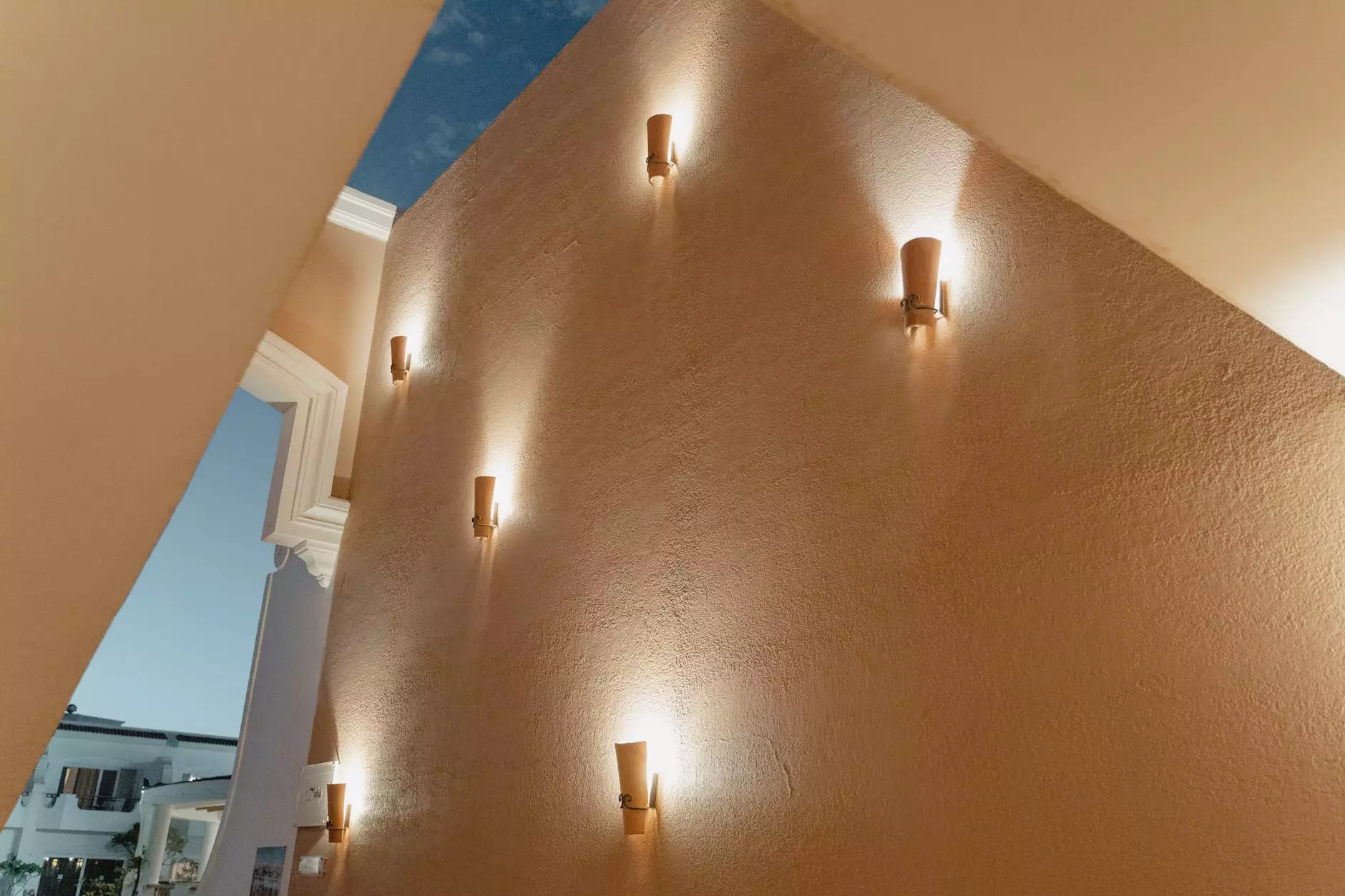Architectural Lighting Fixtures: Choosing the Right Specifications

Welcome to the Video Technics Repair Blog! In this article, we will provide you with a comprehensive guide on choosing the right architectural lighting fixtures for your needs. Whether you are a professional lighting designer or a homeowner looking to enhance your space, we have you covered.
The Importance of Architectural Lighting
Architectural lighting plays a crucial role in emphasizing the features, shapes, and textures of a space. By artfully combining functionality and aesthetics, architectural lighting fixtures have the power to transform any environment into a visually stunning and functional space.
At Video Technics, we understand the significance of selecting the right lighting fixtures to achieve your desired ambiance and highlight architectural elements. With our years of experience in the industry, we are here to share expert tips and guide you through the process of choosing the perfect architectural lighting fixtures.
Consider Your Lighting Goals
Before diving into the nitty-gritty details of architectural lighting fixtures, it's essential to define your lighting goals. Understanding your objectives will help narrow down the options and ensure you make informed decisions that align with your vision.
Are you looking to create a warm and cozy atmosphere in your living room? Or perhaps you want to highlight the unique architectural elements of your office space? Identifying your lighting goals will guide you in selecting fixtures that fulfill your specific needs.
Familiarize Yourself with Different Types of Architectural Lighting
Architectural lighting fixtures come in various types, each serving a unique purpose. Let's explore some of the most popular types:
1. Ambient Lighting
Ambient lighting, also known as general lighting, provides overall illumination to a space. It sets the foundation for other lighting layers to come together harmoniously. Common ambient lighting fixtures include recessed lights, track lights, and chandeliers.
2. Task Lighting
Task lighting focuses on a specific area where a task is performed, such as reading, cooking, or working. Table lamps, under-cabinet lights, and adjustable wall sconces are common examples of task lighting fixtures that provide localized illumination.
3. Accent Lighting
Accent lighting helps create drama and visual interest by highlighting specific architectural elements, artwork, or focal points. Track lights, wall-mounted fixtures, and adjustable spotlights offer versatility in directing light where it's needed most to enhance the visual experience.
4. Decorative Lighting
Decorative lighting fixtures add a touch of style and personality to a space. These fixtures often serve as eye-catching focal points even when not illuminated. Examples include pendant lights, statement chandeliers, and artistic wall sconces.
Taking into Account Fixture Specifications
Once you have a clear understanding of your lighting goals and the types of architectural lighting, it's time to dive into the specifications of the fixtures you are considering. Here are some essential factors to consider:
1. Light Output and Efficiency
The light output and efficiency of a fixture are crucial in determining its effectiveness in illuminating your space. Consider the lumens, color rendering index (CRI), and energy efficiency rating of the lighting fixture to ensure it meets your requirements.
2. Color Temperature
Color temperature refers to the appearance of light as warm, neutral, or cool. Choosing the right color temperature can significantly impact the ambiance of your space. Warm white (2700K-3000K) creates a cozy atmosphere, while cool white (3500K-4100K) offers a more vibrant and refreshing feel.
3. Mounting and Placement
Consider the mounting options and placement requirements of the architectural lighting fixtures. Understand whether they need to be recessed, wall-mounted, or suspended. Take into account the ceiling height, wall space, and any obstructions that may affect the placement of the fixtures.
4. Dimming and Control Options
If you desire flexibility in adjusting the intensity of the lighting, pay attention to the dimming and control capabilities of the fixtures. Some lighting fixtures offer compatibility with smart home systems, allowing you to control them remotely through your smartphone or voice commands.
5. Design and Aesthetics
To complement the architectural style and overall design of your space, select fixtures that align with your aesthetic preferences. Whether you prefer sleek and modern, vintage and rustic, or luxurious and sophisticated, there is a wide range of architectural lighting fixtures available to suit your style.
Consulting an Expert
While our guide provides valuable insights into choosing the right architectural lighting fixtures, consulting an expert can offer personalized advice tailored to your specific needs. Our team at Video Technics is always available to assist you in making informed decisions and ensuring the success of your lighting project.
By prioritizing the quality and effectiveness of our products, Video Technics has built a reputation as a trusted provider of architectural lighting fixtures. With a wide selection of industry-leading brands and a commitment to customer satisfaction, we are your go-to resource for all your lighting needs.
Conclusion
Choosing the right architectural lighting fixtures is a critical step in achieving the desired ambiance and enhancing the visual appeal of any space. Understanding your lighting goals, familiarizing yourself with different types of lighting, and considering fixture specifications will empower you to make informed decisions.
At Video Technics, we are dedicated to helping you choose the perfect architectural lighting fixtures that meet your needs and elevate your space. Explore our wide range of products and consult with our experts to bring your vision to life.



